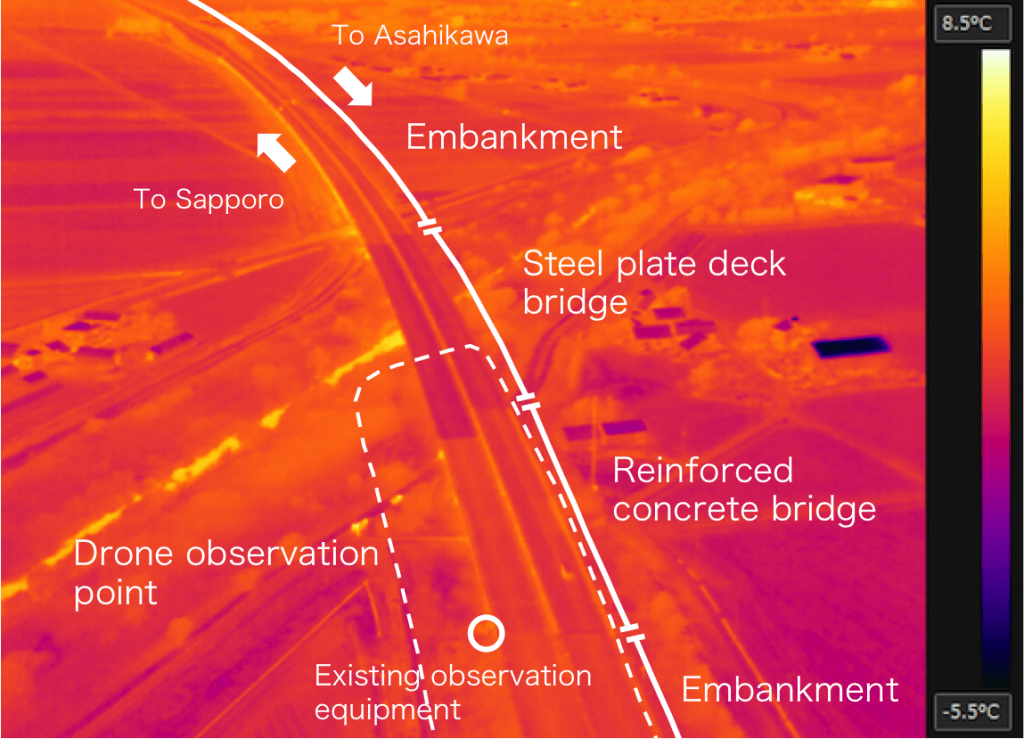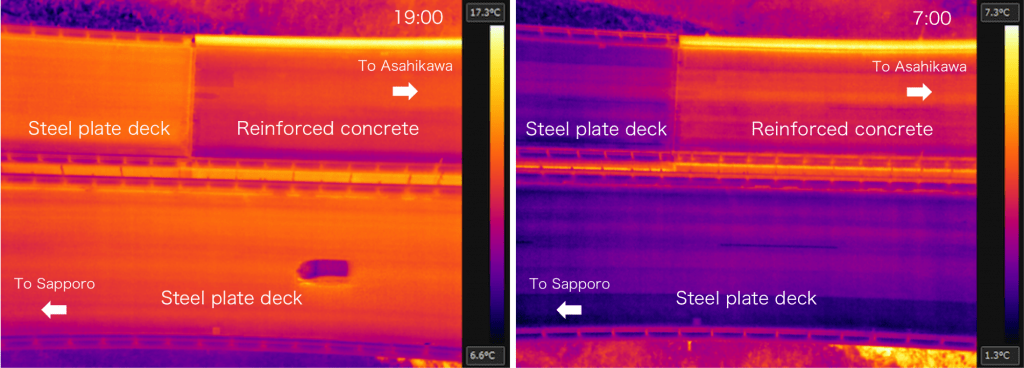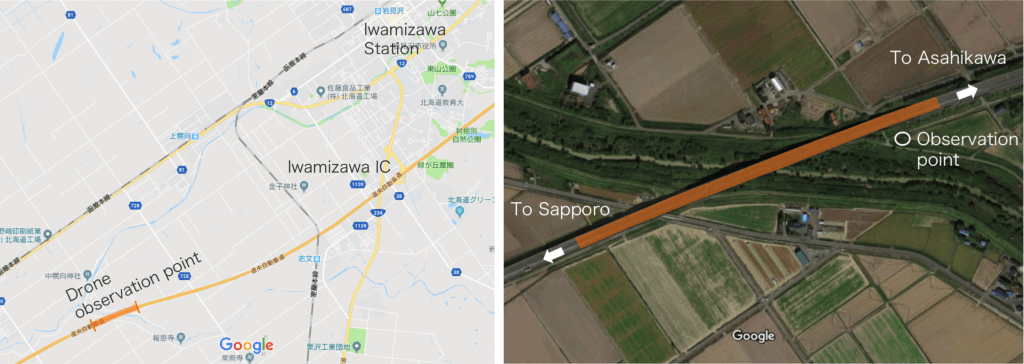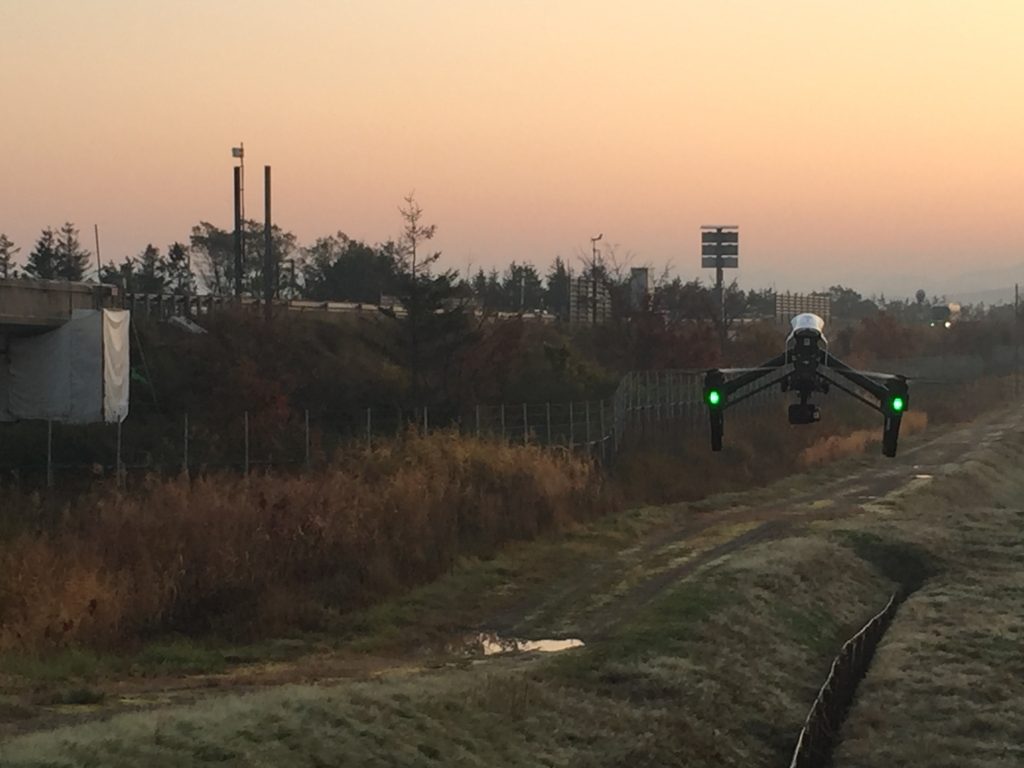News & Press Release
Weathernews Collaborates with NEXCO East’s Hokkaido Regional Head Office Using Drones to Observe Highway Surface Temperatures
Visualizing Differences in Road Surface Temperature Due to Road Structure
Road Management >Weathernews Inc. (Head Office: Mihama-ku, Chiba-shi, Chiba, Japan; CEO: Chihito Kusabiraki) has collaborated with the Hokkaido Regional Head Office of East Nippon Expressway Company Limited (NEXCO East), using drones to observe road surface temperatures on expressways for the first time in Japan. The Hokkaido branch of NEXCO East implements measures against freezing in the winter, such as spraying anti-freezing agents on road surfaces, to ensure that expressways can be used safely, securely and comfortably. Because a wide range of observational data is required to predict areas where road surface temperatures will decrease and spray them reliably, Weathernews conducted observations using drones equipped with infrared cameras to successfully gather data on road surface temperatures. Observing wide areas from the sky allowed us to visualize differences in road temperatures due to road structure that cannot be seen using equipment installed on the expressways. In the future, we plan to expand the observation range around Hokkaido, focusing on areas likely to experience drops in road surface temperature.
Japan's first ever visualization of expressway road surface temperatures using drone observation
NEXCO East's Hokkaido Regional Head Office sprays the roads with anti-freezing agents based on observation data obtained from equipment installed on the expressway surface as well as observation data from temperature sensors attached to maintenance vehicles.
We felt that understanding which areas of the road tend to decrease in temperature could help optimize the spraying of anti-freezing agents. Therefore, we gathered basic data using a drone equipped with an infrared thermographic camera to observe the heat distribution of the expressway's surface temperature.

Yellow indicates higher temperature and purple indicates lower temperature.
Differences in the road surface temperature depending on the road structure
(embankment, steel plate deck, reinforced concrete) are clearly visible.
On-site observations were carried out from October 25th to 26th, 2017, along the Do-O Expressway in the vicinity of the viaduct that crosses the Horomui River in Kurisawa near the Iwamizawa Interchange. We chose a section of about 300 meters that included existing observational equipment and made observations at 30-minute intervals in the morning and evening (4:00 – 8:00 PM on the 25th, 5:00 – 9:00 AM on the 26th). As a result, we were able to clearly see the temperature differences due to differences in road structure (Fig. 1). Regarding changes depending on the time of day, both steel plate decks and reinforced concrete tended to decrease in temperature in the morning due to radiation cooling, and we were able to confirm that steel plate decks, which are especially prone to heating and cooling, had a remarkable decrease in temperature compared to reinforced concrete (Fig. 2).


Although Weathernews has used drones for weather observations in the past, this was the first time we have used them to observe road surface conditions. We plan to continue to expand our use of drones in the future, gathering and analyzing new data to support optimal highway management.
